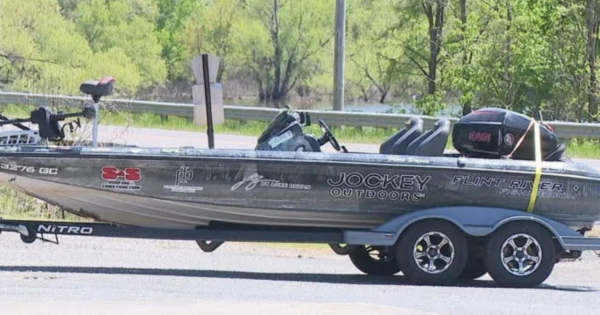
The only people who know what really happened in the deadly boat crash at the MLF tournament on Alabama’s Lewis Smith Lake last week are those directly involved, and those facts are unlikely to emerge until the Alabama Law Enforcement Agency (ALEA) investigation is wrapped up.
The collision took the lives of three anglers and injured two others.
The accident occurred at about 7 a.m. shortly after takeoff for the event, and about five miles from Cullman’s Smith Lake Park where the boats launched for the tournament. The collision took place at the Miller Flats area of the 21,000-acre lake, per ALEA.
Tournament competitor Flint Davis, age 22 of Leesburg, Georgia, was driving a Nitro bass boat involved in the crash.
The bass boat reportedly struck a center console boat operated by Gary Holcombe of nearby Cullman on a charter fishing trip for striped bass.
Three men who were in the center console boat died. They were identified as John K. Clark, 44, of Cullman, Alabama; Jeffrey C. Little, 62, of Brandon, Mississippi; and Joey M. Broom, 58, of Altoona, Alabama. All three died from injuries sustained in the crash. Two of the men were ejected and drowned, and the third died later from trauma, per the local coroner.
In response to the incident, Major League Fishing canceled the final day of the tournament. The event had included a top prize of up to $115,000.

I lived on Lewis Smith for a number of years, and one thing you learn immediately here is that there are a lot of blind corners. The lake is an impoundment of the Sipsey River in very steep, forested terrain, and this creates a lot of sharp bends and points where you can’t see what’s on the other side.
Tournament takeoffs are no longer free-for-all boat races in which the entire field blasts off at once—the competitors exit the ramp area one at a time. But as soon as they are clear, the hammer goes down and the boats run at 60 to 75 mph to be first to what they hope will be a tournament winning spot.
When I lived on the lake, every Saturday and Sunday morning from spring through fall we would be awakened shortly after dawn by the howl of dozens of bass boats headed for fishing spots.
Again, nobody but those directly involved know what really happened, and it’s easy to point Facebook and YouTube fingers in every direction. But speed and a blind corner are sure to be adjudged as among the likely causes.
MLF competitor and YouTuber Mark Fisher, who was in the tournament, said there was no fog—and has video to prove it. He passed the striper fishing boat, showing it in his video, just minutes before the tragedy. The accident occurred where the lake narrows and a sharp turn might have precluded vision.
Photos on Facebook and from news sources show the Mercury outboard on Davis’ boat was ripped right off the jackplate, which could be an indication that it rode up over the striper fishing boat at speed. No photos of the striper boat have yet become available.

One questionable element that has become standard in modern tournament bass boats is the obstructed view at the helm as a result of two big sonar/gps screens mounted on the console. They not only obstruct the view, but their proximity to the line of sight tempts the driver to watch the chart as much as he watches the water ahead. At 60 or 70 mph, this can be extremely dangerous. At 70 the boat is traveling over 100 feet per second.
An accident like this one, rare as it is, is not only an unimaginable tragedy for everyone directly involved but also a blot on the record of high speed fishing tournament competition, likely to bring calls for rule changes that will reverberate throughout the industry.
All of these details will be hashed out in court somewhere down the road as those whose lives have been severely impacted seek legal recourse, a process likely to take months if not years.
Meantime, it behooves all who operate high speed boats to remember they are at least as dangerous as cars and trucks, and there are no seat belts or air bags on the water.
— Frank Sargeant